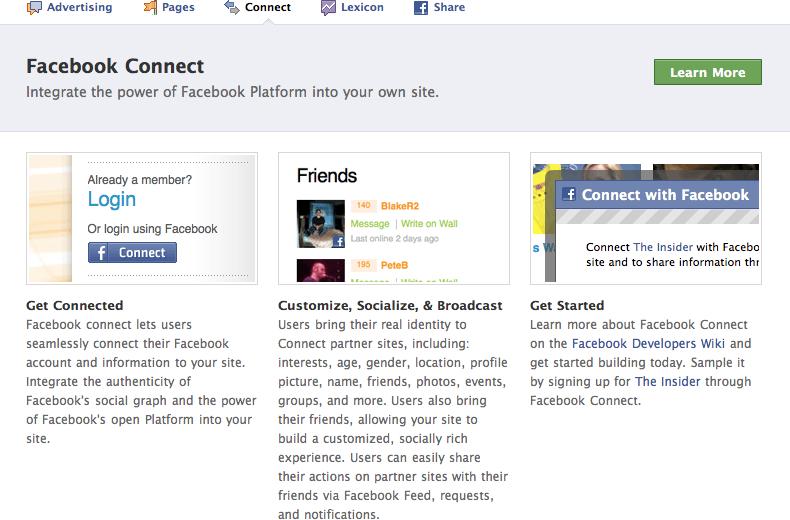From Visits to Visitors
It’s relatively easy to consolidate monitoring data by time and to segment it by shared metrics. For example, conversions by country can be compared to historical performance within that country, and periods of poor performance can be aligned with bounce rates to see if there’s a correlation.
A far bigger challenge, however, is linking individual visits to individual outcomes. In essence, the web monitoring industry is moving from a focus on visits to a focus on visitors. The individual visitor—either named or anonymous—must be tracked across social networks and the conversion process in order to understand the return on any marketing investment. It’s a return to the days of database marketing.

Figure 18-1. Facebook’s business solutions include onsite advertising, the Lexicon analytics platform, paid pages for companies, and tools such as sharing and Connect to encourage users to share their actions
Identifying an individual visitor is critical. This happens in several ways:
- Visitor self-identification
Visitors sign up for a federated social model, such as Facebook Connect, Microsoft Passport, or OpenSocial, which shares their activities with others (Figure 18-1). The information may be anonymized by the owner of the social platform, but already, tools like Radian6 rely on OpenSocial to identify key influencers in a social network.
- Grammatical links
Text from comments ...
Get Complete Web Monitoring now with the O’Reilly learning platform.
O’Reilly members experience books, live events, courses curated by job role, and more from O’Reilly and nearly 200 top publishers.

